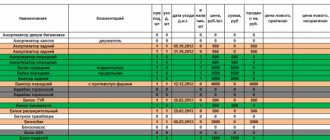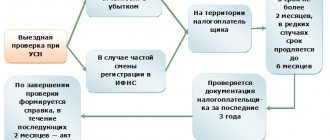Salary concept
It is represented by the exact and constant amount of the employee’s earnings, which is paid monthly when the allotted time is worked. Funds are accrued for the performance of labor duties specified in the employment contract.
To receive a payment, the following conditions must be met:
- the employee follows the provisions of the job description;
- works during the month according to the work schedule;
- present at the workplace.
Attention! An employee’s salary differs from salary, since bonuses, allowances, compensation and incentive payments are also included in the total earnings.
If an employee misses work without good reason, the employer can reduce the salary, for which only the time actually worked is taken into account. Although the amount is fixed in the employment agreement, it must change regularly, since indexation is required based on the level of inflation and the minimum wage.
What is salary
Before you understand the difference between a tariff rate and a salary, you need to review these two concepts in detail. In fact, salary is a fixed amount of an employee’s earnings, which is accrued for the performance of his official duties . In simple words, it is paid in full only if two important conditions are met: that the employee fulfills his job duties and remains at the workplace in accordance with his work schedule.
Wages and salary are two different concepts, for the reason that a fixed sum of money is just part of an employee’s earnings; in addition to it, he can receive various allowances, for example, bonuses and other payments. The definition of salary means a fixed amount that an employee is guaranteed to receive based on the results of the month worked, provided that he stayed at work in accordance with his work schedule.
Determination of tariff rate
The tariff rate is represented by a fixed payment, but it is paid not for a month, but for a certain unit of time. It is usually determined for work for one day or hour. Therefore, the exact salary is calculated depending on the period worked.
When using a tariff rate, monthly earnings are calculated individually, taking into account the provisions of the work schedule. For example, an employee works at a rate of 190 rubles. for 1 hour of work. During the month he worked 185 hours, so his salary is: 185 * 190 = 35,150 rubles.
To receive payment, you must not only be at the workplace, but also perform work duties, as well as comply with other labor discipline requirements. The main advantage of using a tariff rate is the ability to independently calculate earnings, as well as to balance wages with the efforts invested.
Similarities
Despite all the differences between these systems, they have a lot in common. As it turned out earlier, a salary can only be received after working out the pay period, and the tariff rate involves the payment of earnings for a certain unit of time, an hour or a week a day. But if an employee has not worked in full for a month, for example, was on vacation or on sick leave, then his salary is paid only for the time actually worked.
Let's look at how to calculate the hourly rate from your salary. Everything is quite simple, to do this you need to divide a fixed amount by the number of days or hours worked . For example, if it is 25,000 rubles per month, then you can calculate how much he earns per day if there are 22 working days of 8 hours each in a calendar month. Thus, his tariff rate per day will be 25000/22, equal to 1136.36 rubles per day or 142 rubles per hour.
Please note that in the system of calculating wages from salary, the employer clearly pays the employee only for the time he has worked, that is, payment is taken from the salary for the period that he is absent from the workplace.
Thus, the employer alone establishes the system of remuneration for employees of his enterprise: salary and tariff rate. What is the difference? Significant differences are that the tariff rate is applied in most cases to representatives of a profession in the field of production or service; the salary is more often applied to employees in the field of economics or other intellectual activity.
Differences between indicators
The rate and salary have many differences, but the following points are considered the most important:
- according to the salary, the salary is paid twice a month, and at the tariff rate it can be paid daily or once a week;
- the salary is issued only during the performance of labor duties, and the rate is calculated for hours worked.
It is recommended that you carefully review these differences before signing an employment contract. People usually work on a salary basis, so they receive a monthly salary, the amount of which is specified in the agreement. The pay rate is often offered to waiters, entertainers, and others who wish to be paid at the end of each shift. In many positions, job performance is more important than time spent with the company, so a fixed payment is appropriate in these circumstances.
Sectoral economics, all lectures / Lecture 38. Calculation of average indicators of elements of the tariff system
Lecture 38. Calculation of average indicators of elements of the tariff system.
1). Calculation of the average tariff coefficient for a group of workers.
The average tariff coefficient for a group of workers (Ks) is calculated as the arithmetic average of the products of rank-based tariff coefficients and the number of workers in each category:
Ks = / Cho,
where Ki is the tariff coefficient of the i-th category of workers;
Chi is the number of workers with the i-th category, people;
Cho - total number of workers, people;
n is the number of ranks available to workers.
2). Calculation of the average tariff coefficient for work performed.
The average tariff coefficient of work performed (Ks.r.) is calculated as the arithmetic average of the tariff coefficients of work performed, weighted by the labor intensity of work of each category:
Ks.r. = / That,
where Ki is the tariff coefficient of the i-th category of work;
T i — labor intensity of work of the i-th category;
That is the total labor intensity of the work;
m – the number of category groups by which work is charged.
The average tariff coefficient can also be calculated using the average tariff category using the formula:
Ks = Km + (Kb - Km) (Ps - Pm)
or by the formula:
Ks = Kb - (Kb - Km) (Rb - Rs),
where Km and Kb are, respectively, the smaller and larger tariff coefficients from two adjacent ranks of the tariff schedule, between which the middle rank is located;
Рс — average tariff category of workers (works);
RM and RB - respectively, the smaller and larger tariff categories of two adjacent categories of the tariff schedule, between which there is an average tariff category.
The average tariff coefficient of workers (works) can also be calculated using the average tariff rate using the formula:
Ks = Cs / C 1,
where CC is the average tariff rate of a worker (work);
C 1 - tariff rate of the 1st category.
3). Calculation of the average tariff category.
The average tariff category of workers (works) (Рс) is determined by the known average tariff coefficient using the formula:
Рс = Рм + (Кс – Км) / (Кб – Км)
or by the formula:
Рс = Рb – (Кб – Кс) / (Кб – Км).
The average tariff category of workers (works) can also be calculated using the average tariff rate using the formula:
Рс = Рм + (Сс – См)/ (Сб – См)
or by the formula:
Рс = Рb - (Sb - Ss) / (Sb - Sm),
where Sm and Sat are, respectively, the lower and higher tariff rates, between which lies the average tariff rate of workers (works).
4. Calculation of the average tariff rate.
The average tariff rate of workers (works) can be calculated as the arithmetic average of tariff rates, weighted by the number of workers (works) having the same tariff rates:
CC = ,
or at tariff rates for work performed according to the formula
CC = ,
where Ci is the tariff rate of remuneration for workers (works) related to the i-th
category of worker (work performed).
The average tariff rate for workers (work) can be calculated using a known tariff coefficient and the tariff rate of the 1st category using the formula:
Сс = С1 Кс,
where C1 is the tariff rate of the 1st category for this group of workers (work);
Ks is the average tariff coefficient for a given group of workers (works).
Example 1.
The team has 44 workers, of which 8 people have the 2nd category (C2 = 49.50 rubles),
10 people have the 3rd category (C3 = 54.70 rubles), 12 people have the 4th category
(C4 = 61.40 rubles) and 14 people have the 5th category (C5 = 70.0 rubles). It is required to calculate the average tariff rate of a team of workers.
Solution. CC = (49.50 x 8 + 54.70 x 10 + 61.40 x 12 + 70 x 14) / 44 = 60.45 rub.
Example 2.
Calculate the average tariff rate of workers in a team if the tariff rate of the 1st category is 45.50 rubles, and the average tariff coefficient of the team is 1.63.
Solution. CC = 45.50 x 1.63 = 74.16 rub.
Example 3.
The total labor intensity of work performed within a month by a team of 15 people is
is 2700 standard hours (n/h). At the same time, 700 n/h falls on work of the 2nd category (hourly tariff rate C2 = 49.50 rubles), 650 n/h falls on work of the 3rd category (C3 = 54.70 rubles), 810 n/h h - for work of the 4th category (C4 = 61.40 rubles) and 540 n/h for work of the 5th category (C5 = 70.00 rubles). It is required to calculate the average hourly tariff rate for the work performed by this team.
Solution. CC = (49.50 x 700 + 54.70 x 650 + 61.40 x 810 + 70 x 540) / 2700 = 58.42 rub.
Example 4.
Calculate the average tariff coefficient of piece workers at the assembly site if their average hourly tariff rate is 70.50 rubles, and the tariff rate of a 1st category worker is 45.50 rubles.
Solution. Kc = 70.50/ 45.50 = 1.549.
Example 5.
There are 12 people in the brigade, of which 7 people are of the 3rd category (tariff coefficient
K3 = 1.20), 3 people - 4th category (K4 = 1.35) and 2 people - 5th category
(K5 = 1.53).
It is required to calculate the average tariff coefficient of the brigade.
Solution. Kc = (1.20 x 7 + 1.35 x 3 + 1.53 x 2) / 12 = 1.292. ———-
Similarities between indicators
The salary in the salary takes up the largest part of the payment, as does the tariff rate. Additionally, compensation, incentive transfers or additional payments are included in earnings.
Salary and rate have the following similar parameters:
- money is paid at the end of a specified period, represented by a day, week or month;
- it is possible to calculate payments per hour, day or other period;
- To evaluate the work of any employee, a certain fixed rating is used.
If a person went on vacation or sick leave during the month, the fixed amount is reduced, so in any case the actual period worked is taken into account.
Both payroll systems take into account a certain tariff. When setting any indicator, the qualifications, level of responsibility and experience of the hired specialist are taken into account. These values are influenced by the situation on the labor market and the possibility of replacing an employee with another employee.
What are the similarities?
Although both remuneration systems differ quite significantly, they still have some similarities.
In both cases:
- payments are implied based on a certain temporary indicator;
- some fixed estimate of the cost of labor is applied;
- it is possible to calculate the rate per hour, day, etc.
We have already said that according to salary, money is paid per pay period, and the tariff rate implies payments per unit of time. However, in the case when an employee has not worked the entire required month - due to vacation or sick leave (for example) - his salary is accrued only for the actual time worked
. This combines both remuneration systems.
Important! Both the salary and the tariff rate basically have a single tariff system. It sets the amount of payments in accordance with qualification requirements, the level of responsibility of the official, current prices for consumer goods, the general situation on the labor market, etc.
How is the hourly rate calculated based on salary?
? Everything is simple here: the fixed amount is divided by the number of days or hours actually worked by the employee.
Example 2.
Let’s say the salary of an employee of some organization is 30,000 rubles. Then, with 22 eight-hour working days in a calendar month, his rate will be equal to:
- per day – 30,000 / 22 = 1,363.63 rubles;
- per hour – 1,363.63 / 8 = 170.45 rubles.
Each employer independently decides which remuneration system to use. However, this still depends on the professional field. For example, production and service workers more often receive salaries at the tariff rate. Economists usually work on a salary.
Is it possible to determine the tariff rate based on salary?
If a person knows how much he can receive per month, then he can easily determine the payment per hour or other period. For example, an employment contract specifies a fixed payment of 40 thousand rubles. A citizen works 22 days, 8 hours a month.
The tariff rate for 1 day of work under such conditions is: 40,000 / 22 = 1818 rubles. The payment per hour is: 1818 / 8 = 227 rubles.
Company managers independently choose a remuneration system, which takes into account the scope of work and the characteristics of the employees’ job responsibilities. Tariff rates are often chosen for the production or service sector, while salaries are more suitable for trade representatives.
We remind you that even if you thoroughly study all the data that is in the public domain, this will not replace the experience of professional lawyers! To get a detailed free consultation and resolve your issue as reliably as possible, you can contact specialists through the online form .
What is the difference between a tariff rate and a salary?
Salary has a lot in common with rate. Official salary is the amount of payment for work established for a selected period of time. You need to learn to distinguish between terms and their meaning in order to correctly evaluate work and calculate labor income.
A common characteristic is that these values are used to determine the minimum income of a person, below which payment is impossible. Despite this, the differences between the terms are significant:
- Salary implies an exact monetary amount established for a month of work, subject to the employee performing the types of work expected according to the position. For a tariff rate, the value is defined as a fixed payment for the execution of an assigned norm of a certain level of complexity for a specific period of time - an hour, a day, a month.
- The salary amount is influenced by the qualifications of the person working in a particular position. The tariff rate assumes dependence on the rank held by the employee at a given enterprise.
Thus, the salary is determined according to the position and achieved qualifications of the employee, based on the education received and experience. For the rate, the complexity of the tasks performed, the intensity of the work process, employment conditions and the importance of the actions are more important.
Differences from salary
The rate and fixed payment are set during the interview and specified in the contract. But wages also consist of other cash receipts, which include bonuses, allowances or incentive transfers, as well as compensation. The difference is that final earnings cannot be predicted, and they are not recorded in any official documentation.
Transfers depend on the results of activities, as well as on the efforts of the employee. Often, when the plan is exceeded, specialists receive large bonuses. Even from these payments, the employer is required to pay taxes and insurance premiums.
For example, an employee of a production organization receives a fixed payment of 40 thousand rubles. He works 22 days a month, and is also obliged to fulfill the plan of creating 1 thousand blanks. Suppose he exceeded the plan by 200 products in a month, and for each he receives an additional payment of 100 rubles, therefore, his salary is 42 thousand rubles.
General calculation procedure
To determine the amount of wages that an employee is entitled to, it is enough to multiply the cost of an hour of his labor by the time actually worked in the reporting period.
If the number of hours a person was at work is easy to determine, then with the hourly rate things are more complicated. For different forms of remuneration and specific situations, different algorithms for its calculation are used.
The easiest way is to set a fixed tariff once and write it down in internal corporate documents. The cost of an hour will depend on the qualifications of employees and their position in the organization. Thus, the rate for a hall administrator will be higher than that of a cashier, but lower than that of a store director.
Most organizations take the unit of cost of time worked not as an hourly rate, but as a salary. There is no need to change this system, which has been proven over the years: the price of one hour is easily calculated from the monthly salary, knowing which you can calculate the amount to be transferred for a month not fully worked or going to work on a holiday.
In practice, two main calculation methods are used, each of which has positive and negative sides.
The second formula for an accountant
This option involves using the average annual number of labor hours as a basis.
We need to divide the annual rate by 12: this is how we get the monthly rate. The employee's salary should be divided by this.
Hourly rate = Employee salary / (Average annual standard / 12).
You can clarify the average annual standard in an accounting program or online source.
Case Study
For Vitaly Nikanorov, who works in a warehouse, a summarized accounting of hours worked is used. Vitaly’s salary is 25,000 rubles. In January he worked 130 hours, in February - 150, in March - 155.
Official data for 2021 states that the labor standard for 12 months is 1974 days.
The hourly rate for a warehouse employee is 151.98 rubles: 25,000 rubles. / (1974 hours /12 months). Using this indicator, the accountant calculates the amount of the employee’s salary in each month of the quarter:
- January - 19,756.84 rubles (151.98 rubles * 130 hours).
- February - 22,796.35 rubles (151.98 rubles * 150 hours).
- March - 23556.23 rubles (151.98 rubles * 155 hours).
At first glance, it seems that the second method is more complicated than the first. Actually this is not true. In the first case, the hourly rate must be calculated monthly, in the second it is enough to determine it once a year. The key advantage of the method is that the salary of each employee of the organization is directly proportional to the number of his actual outputs. This value does not depend on the number of holidays and weekends that fall in a particular month.
Similar articles
- An example of calculating total working time accounting
- How to calculate man-hours for a year
- Man-hours: calculation formula
- Number of man-hours in 2017-2018
- Number of man-hours worked by payroll employees






